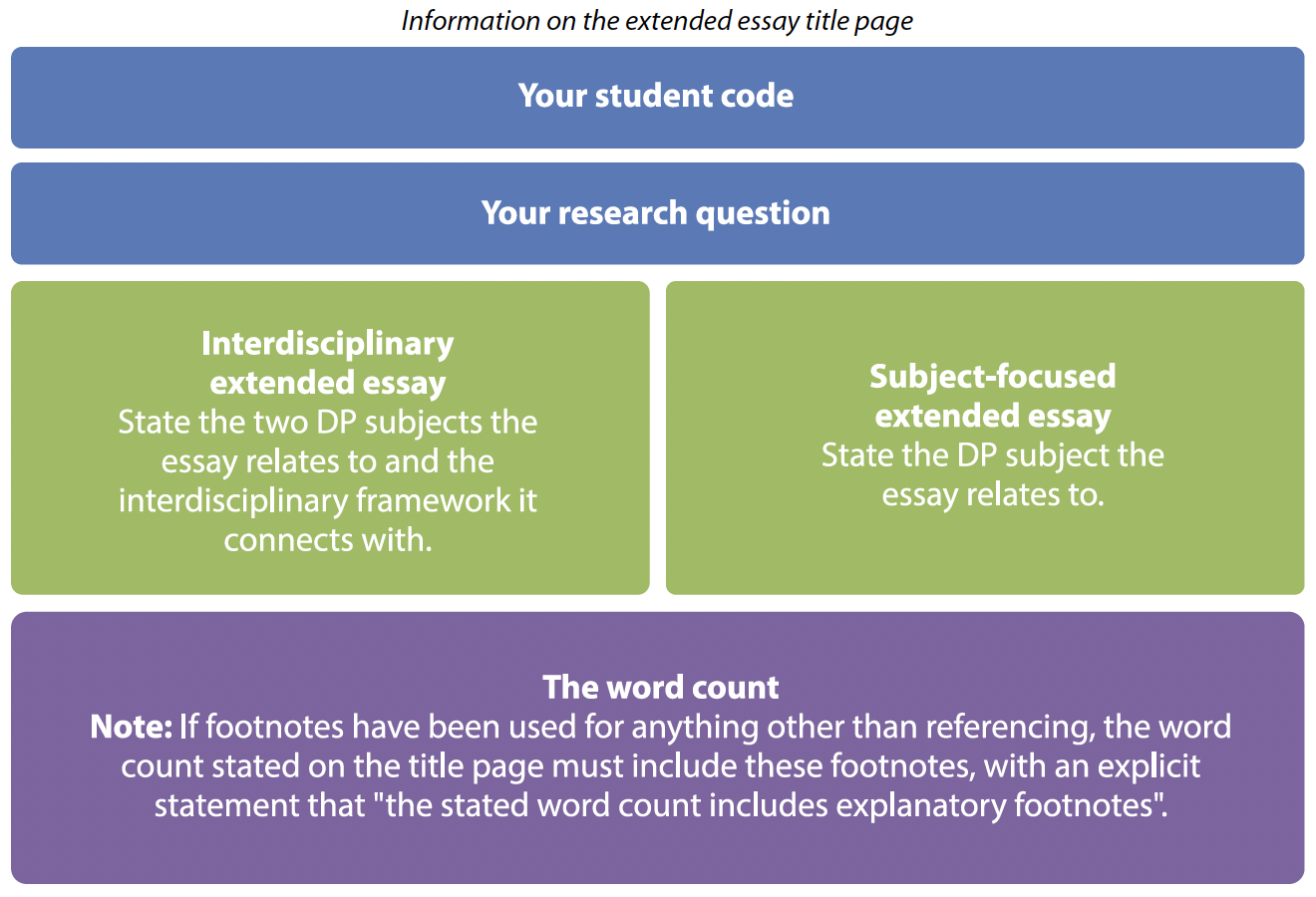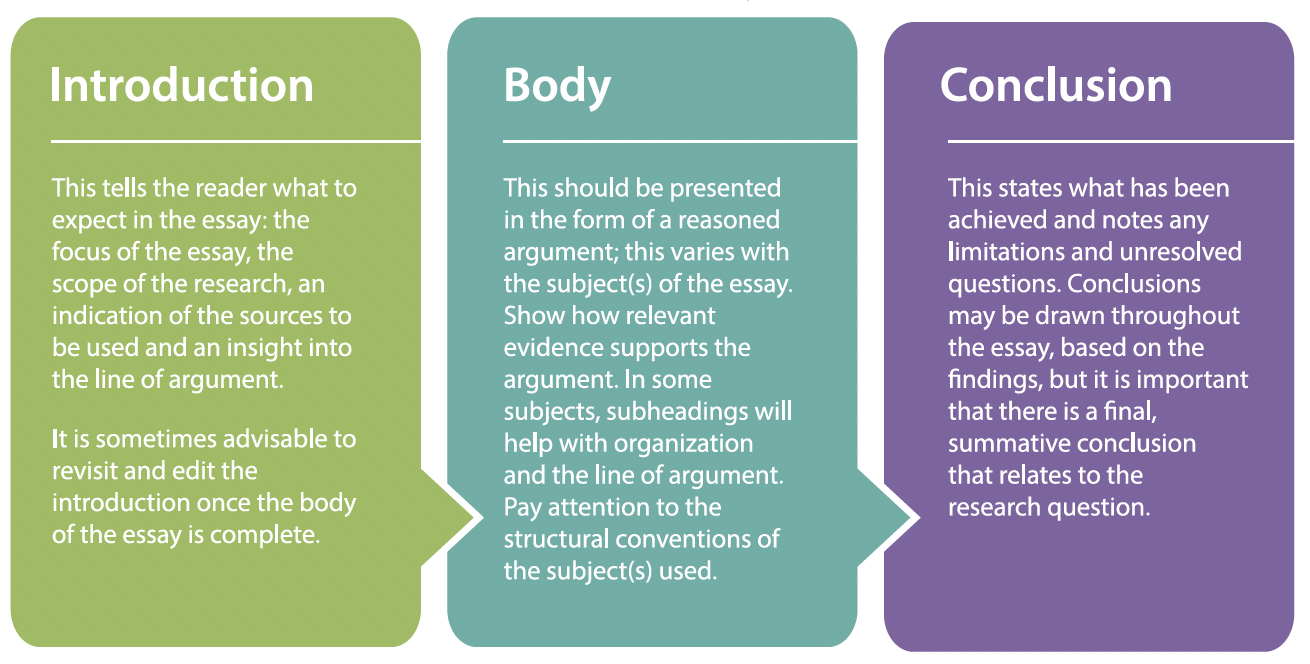

Your extended essay should be clearly written in a formal academic style, appropriate to the subject(s) from which the topic is drawn. Given that the extended essay is a formally written research paper, it should strive to maintain a professional, academic look.
To help achieve this, follow this formatting guidance.
Submitting your extended essay in the required format will help set the tone of the essay and will aid readability for on-screen assessment by examiners.
Overall structure
 The structure of your essay is very important because it helps you to organize your line of argument.
The structure of your essay is very important because it helps you to organize your line of argument.
The following structural conventions must be present in the essay you submit for assessment.
In addition to the recognized structure of any extended essay, as above, it is also important to incorporate any structural conventions that relate to the subject(s) you are using.

Word counts
The upper limit for all extended essays is 4,000 words. Note that examiners are instructed not to read or assess any material in excess of the word limit.
This means that essays containing more than 4,000 words will be negatively compromised across all assessment criteria. You should therefore ensure that your essay remains within the word limit. If the word count of your final draft is over 4,000 words you should edit it down accordingly.
The table below provides specific guidance on the content that is and is not included in the word count.
| Included in Word Count | NOT Included in Word Count |
|---|---|
| The Introduction | Table of Contents |
| The Body | Headers (next to pg #) |
| The Conclusion | Maps, Charts, Diagrams, Annotated Illustrations |
| Quotations | Tables |
| Footnotes (that are not citations) | Equations, Formulas & Calculations |
| Section headings in the text | Citations: paranthetical, numbered, or footnotes |
| The Bibliography | |
| The Reflection |
Students writing in Chinese, Japanese or Korean
Students writing their extended essay in Chinese, Japanese or Korean should use the following conversions.
When typing in Chinese, Japanese or Korean, word processing software is likely to include the number of characters and punctuation in the word count. Students should not include punctuation in the word count for assessed work. The word count should only reflect the number of characters typed.
EE Guide pg 87-92
How to Construct an Effective Outline
How you organize your EE depends a great deal on your subject and content. Talk to your supervisor, of course, but these sources will give you good, general advice.
SAMPLE OUTLINES
Asking AI for structure ideas
*I recommend using FLINT
PROMPT: I am writing an EE in [SUBJECT]. I would like to consider several possible ideas for organizing my essay. Could you provide some pros and cons for each structure? Here is my research question [PASTE YOUR RQ HERE].
FOLLOW-UP: Can you show me an example of [STRUCTURE]?
Use this video for a quick and easy guide to creating a Table of Contents in MS Word. Trust me, you want to do this!